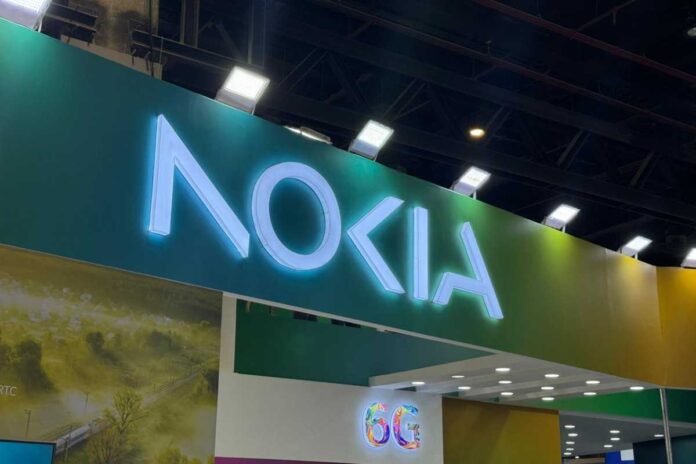In Short:
Vodafone Idea (Vi) has partnered with major vendors like Nokia, Ericsson, and Samsung, raising questions about Open RAN’s future in India. While Open RAN aims to reduce costs and improve flexibility, experts highlight challenges, including high deployment costs and integration issues. Despite this, some believe it holds promise, with significant deployments expected by 2026, promoting a hybrid approach to telecom networks.
Vodafone Idea (Vi) Expands Collaborations with Major Telecom Vendors
Recently, Vodafone Idea (Vi) has aligned itself with industry titans such as Reliance Jio and Bharti Airtel by securing substantial contracts with established network vendors including Nokia, Ericsson, and Samsung. This strategic move raises pertinent questions regarding the future of Open RAN technology within India’s telecom sector.
Understanding Open RAN
Open RAN represents a vendor-agnostic approach aimed at the interoperability of hardware, software, and radio components, potentially leading to significant cost savings. This technology is particularly attractive for Vodafone Idea, which is yet to launch its 5G networks.
However, industry analysts have noted a decline in enthusiasm for Open RAN, primarily due to various challenges surrounding cost-effectiveness, scalability, and the complexities of legacy infrastructure and technology standardization. Consequently, widespread adoption is now anticipated only in the 6G era, which remains several years away for India.
Global Trials and Trends
Despite these challenges, some telecom players continue to champion the concept of a genuinely open network architecture. Notably, Rakuten in Japan has successfully implemented a commercial network based on cloud-native Open RAN technology for 4G and 5G. Additionally, Red Hat, a prominent provider of open-source solutions, emphasizes that transitioning to Open RAN is a gradual process rather than an instantaneous change.
In June, Vodafone Idea announced trials with Samsung to implement virtualized RAN (vRAN), which eliminates the necessity for physical hardware by executing baseband functions solely as software. Airtel is also experimenting with Mavenir to deploy 2,500 Open RAN sites in rural markets.
Reliance Jio is taking a proactive stance by developing its own open stack, further bolstered by acquisitions of telecom solutions provider Radisys and equipment manufacturer Mimosa Networks.
A senior executive at a leading telecom company commented, “These projects are currently not the primary focus, as most 5G deployments have now concluded, leading telcos to tighten their capital expenditures. Although Open RAN has substantial potential, multiple challenges within India’s telecom landscape are hindering its expectations.”
Challenges Ahead
Analysys Mason partner Ashwinder Sethi likened the situation around Open RAN to a “chicken and egg story” pertaining to achieving scale while driving costs down. He noted that trials indicate that the costs associated with deploying Open RAN may not be significantly lower than traditional models, and in the case of 5G, could even be more expensive. Consequently, telecommunications companies perceive the associated risks as unjustifiable without clear financial advantages.
According to veteran telecom network specialist Parag Kar, virtualization of RAN offers the primary benefit of enhanced flexibility in telecom networks. “An open ecosystem facilitates collaboration with multiple vendors. In contrast, traditional hardware deployment results in reliance on a single vendor, thereby diminishing negotiation leverage and scalability opportunities,” he explained.
Notwithstanding its potential, Open RAN is still nascent on a global scale, with significant uncertainty surrounding its ability to yield notable cost benefits. The increased transaction costs that arise from integrating components from different suppliers may constitute considerable hurdles in achieving these benefits.
As Kar pointed out, “We will inevitably require system integrators who can effectively manage network integration among diverse vendors while ensuring network performance. While this will lower total ownership costs, their services will incur additional expenses.”
Global Adoption and Market Trends
Once viewed as a potential disruptor in telecom network technology, Open RAN appears to have lost momentum globally. Key operators like Virgin Media O2 in the UK and STC in Saudi Arabia have adopted Mavenir Open RAN, whereas AT&T, a founding member of the O-RAN Alliance, has implemented Ericsson’s vRAN.
Research from telecom-focused group Dell’Oro indicates that Open RAN accounted for only 6-10% of global deployments compared to traditional RAN in 2023, with projections indicating a modest increase to 15-20% by 2027. As Huawei and ZTE face exclusions from global telecom networks, operators are becoming increasingly reliant on a select group of suppliers including Ericsson, Nokia, and Samsung, making Open RAN vital for negotiating multi-vendor contracts, according to industry experts.
Optimism for the Future
Despite the skepticism, some companies remain optimistic about the future of Open RAN. Rahul Atri, managing director at Rakuten Symphony India, expresses confidence in large Open RAN deployments commencing globally in 2026. He noted, “5G deployments in India are occurring at a faster pace compared to other regions, leading to a preference for traditional technology stacks for macro networks. However, we envision that orchestration will be a critical enabler for enhancing efficiencies and automating operations across traditional, cloud-native, and Open RAN networks.”
Vodafone, Europe’s largest telecom firm, has committed to incorporating Open RAN in 30% of its European sites by 2030. Similarly, Telus of Canada and Telefónica of Spain have also made considerable investments in this domain. In India, Reliance Jio is actively constructing its own O-RAN 5G stack.
Marshal Correia, vice-president and general manager for Red Hat in India and South Asia, emphasized that the transition to O-RAN is a gradual process: “The telecom ecosystem is intricate, and no single vendor can govern it independently.” He underscored the importance of a hybrid approach that enables operators to harness the advantages of both traditional and open technologies, setting a foundation for a fully open and interoperable future.
Regarding existing challenges, Correia highlighted a significant inadequacy of system integrators proficient in managing deployment and ecosystem matters. Nevertheless, he remains optimistic about the possibilities of Open RAN in a rapidly evolving, cost-sensitive market like India, where it could transform network architectures by decoupling hardware from software.





